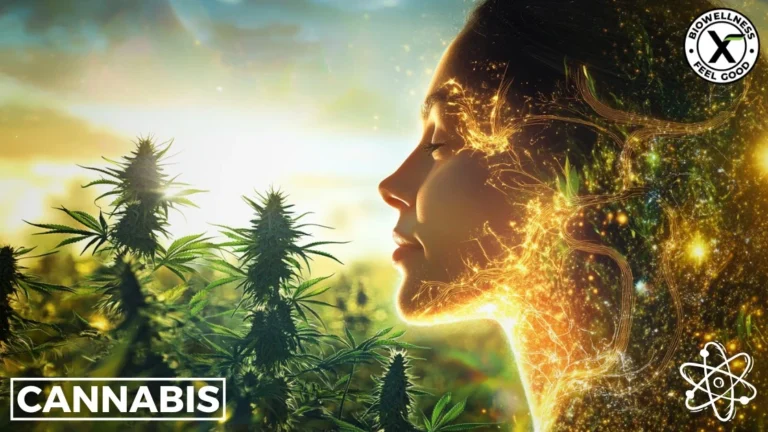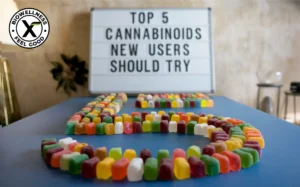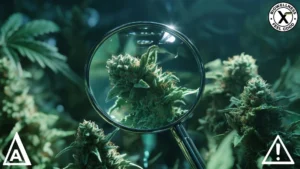The endocannabinoid system (ECS) is an amazing biological system of the human body that has only recently come to light in the latter part of the 20th century. One of the greatest physiological findings of modern medicine is this vast signaling system present in every vertebrate. As the master controller of homeostasis, the ECS is constantly fine-tuning essential processes such as immune response, hunger regulation, mood, sleep patterns, and memory consolidation.
The ECS was discovered through studies on how cannabis gets its effects. Researchers studying Delta-9-tetrahydrocannabinol (THC), the active psychoactive substance in cannabis, found specialized receptors that THC acts upon. Those receptors were part of a much larger regulatory system that reacts to not only plant-based cannabinoids (phytocannabinoids) but also to substances made internally by our bodies (endocannabinoids) that our bodies produce naturally.
This article offers an in-depth review of:
- The complex structure and operation of the ECS
- The specific molecular interactions of cannabis compounds with this system
- Therapeutically proven therapeutic uses of cannabis
- Risks and adverse effects of using cannabis
- New directions for research in cannabinoid science
Through exploring these areas in depth, we hope to offer a complete picture of how cannabis acts on human biology at the most basic level.
The Endocannabinoid System – Structure and Function
Between 1988 and 1992, various research projects resulted in the groundbreaking discovery of the ECS. The CB1 receptor was first identified in 1988 by Dr. Allyn Howlett’s group at St. Louis University during an investigation of cannabis’ impact on the brain. Just after that, Sean Munro’s group at Cambridge University discovered the CB2 receptor in 1993. The last piece of the puzzle was the discovery of endogenous cannabinoids—anandamide (AEA) by William Devane and Raphael Mechoulam in 1992 and 2-arachidonoylglycerol (2-AG) in 1995.
The ECS comprises three core components that work together:
Endocannabinoids:
When needed, phospholipids found in cell membranes are used to create these lipid-based signaling molecules. Unlike traditional neurotransmitters, which are kept in vesicles, they are created exactly when and where needed. The two most important endocannabinoids are:
- Anandamide (AEA): The molecule, named after the Sanskrit “ananda” meaning bliss, is involved in the regulation of appetite, physical discomfort, and mood.
- The brain’s most common endocannabinoid, 2-arachidonoylglycerol (2-AG), has been implicated to regulate energy metabolism, emotional response, and neuroinflammation.

Cannabinoid Receptors:
These G protein-coupled receptors are located in cell membranes throughout the body. There are two types of cannabinoid receptors: CB1 and CB2.
Most CB1 receptors are found in the brain and spinal cord, with the highest densities in the basal ganglia, hippocampus, cerebellum, and cerebral cortex.
CB2 Receptors are primarily in immune cells and peripheral tissues, including spleen cells, macrophages, and microglia.
Metabolic Enzymes:
Enzymes that specialize in endocannabinoid production and degradation are known as metabolic enzymes.
FAAH: The initial role of Fatty Acid Amide Hydrolase (FAAH) is degradation of anandamide.
Monoacylglycerol Lipase (MAGL): The major enzyme responsible for 2-AG degradation.
Cannabinoid Receptors
CB1: Masters of Neurological Regulation
CB1 receptors are amongst the most prevalent G protein-coupled receptors of the central nervous system. They are found in a dense concentration in brain areas involved with learning and memory, such as the hippocampus.
- The amygdala regulates emotions.
- Motor control (basal ganglia and cerebellum).
- Pain perception (periaqueductal gray)
- The hypothalamus regulates appetite.
- Reward processing in the nucleus accumbens.
When stimulated, CB1 receptors usually restrict the release of neurotransmitters through a method called retrograde signaling. The novel process permits postsynaptic neurons to convey feedback information back to presynaptic neurons, thereby retarding brain functioning. This repression process accounts for several of cannabis’ effects, including diminished perception of physical discomfort and changing memory processes.
At the molecular level, activation of the CB1 receptor initiates a cascade of intracellular events:
- Binding of an agonist (e.g., THC or anandamide) to the receptor causes it to change conformation.
- This activates G proteins, namely Gi/o type, which inhibit adenylate cyclase.
- Reduction in cAMP production affects protein kinase A activity.
- Activated G proteins inhibit voltage-gated calcium channels and activate inwardly rectifying potassium channels.
- Such changes restrain neurotransmitter release from presynaptic neurons.
CB2 Receptors: Guardians of Immune Function
While less abundant in the central nervous system compared to CB1 receptors, CB2 receptors play equally vital roles in peripheral tissues:
Primary Locations:
- Immune cells (macrophages, B-cells, T-cells, microglia)
- Spleen and tonsils
- Gastrointestinal tract
- Bone tissue (osteoblasts and osteoclasts)
- Skin (keratinocytes and melanocytes)
Immunomodulatory Mechanisms:
- Cytokine Regulation: CB2 activation reduces pro-inflammatory cytokines (TNF-α, IL-1β, IL-6) and induces anti-inflammatory cytokines (IL-10, TGF-β)
- Immune Cell Migration: Decreases immune cell chemotaxis to sites of inflammation
- Oxidative Stress Control: Regulates production of reactive oxygen species
- Cell Proliferation: Regulates apoptosis and cell survival pathways
While CB1 activation has psychoactive effects, CB2 stimulation is devoid of these and, hence, is a promising target for creating non-intoxicating cannabis-based treatments for inflammatory diseases.
Endocannabinoid Biosynthesis and Degradation
Endocannabinoids go through specific catabolism and synthesis processes during their life cycle.
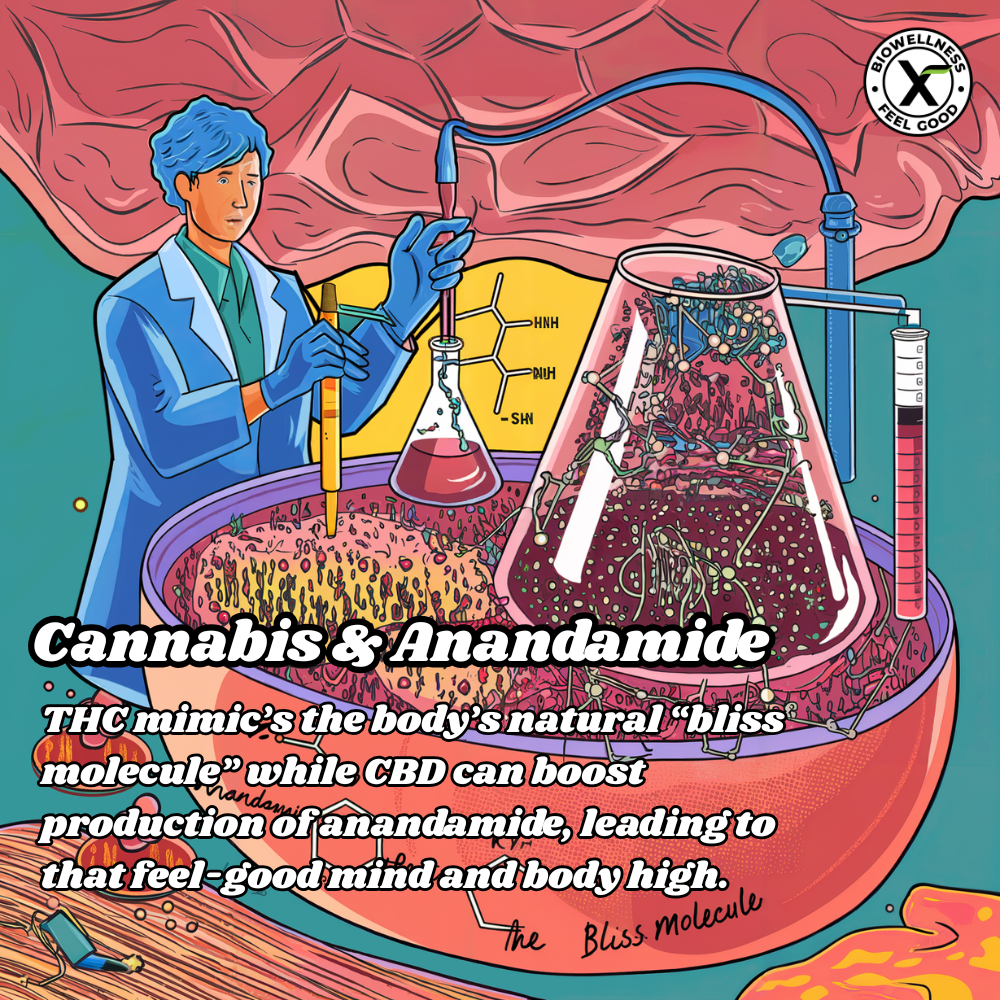
Anandamide (AEA) production:
(How your body creates its natural “bliss molecule”)
- N-acyltransferase changes membrane phospholipids, especially phosphatidylethanolamine, to produce N-arachidonoyl-phosphatidylethanolamine (NAPE).
(First, an enzyme modifies fat molecules in cell membranes to make a special precursor molecule.) - NAPE-specific phospholipase D (NAPE-PLD) breaks down NAPE to liberate AEA.
(Then another enzyme cuts this precursor to release the active anandamide molecule.)
Synthesis of 2-AG:
(How your body makes its most abundant natural cannabinoid)
- Phospholipase C (PLC) catalyzes the generation of diacylglycerol (DAG) from membrane phospholipids.
(One enzyme starts the process by creating an intermediate molecule from cell membrane fats.) - DAG is converted into 2-AG by diacylglycerol lipase (DAGL).
(A second enzyme then transforms this intermediate into the active 2-AG cannabinoid.)
Pathways of Degradation:
(How your body clears away these compounds when they’re no longer needed)
- Fatty acid amide hydrolase (FAAH) is the principal enzyme responsible for the breakdown of AEA.
(One cleanup enzyme specifically breaks down anandamide.) - Monoacylglycerol lipase (MAGL) is the major enzyme responsible for the metabolism of 2-AG.
(A different cleanup enzyme handles breaking down 2-AG.)
Without inducing systemic overburden, this on-demand production and rapid degradation allow for precise, localized regulation of physiological functions. In simple words, these compounds work exactly where and when needed, without overloading your body.
Cannabis Compounds and Their Molecular Interactions With ECS
THC: The Psychoactive Powerhouse
Delta-9-tetrahydrocannabinol (THC) serves as cannabis’s primary intoxicating component through its direct engagement with the ECS:
- Binds strongly to CB1 receptors in the brain, mimicking anandamide but producing much stronger effects.
- Activates the brain’s reward system, leading to feelings of euphoria and relaxation.
- Stimulates appetite by affecting hunger-regulating brain circuits (the “munchies” effect).
- Impairs short-term memory by disrupting communication in the hippocampus, the brain’s memory center.
- Can cause anxiety or paranoia in high doses, likely due to overstimulation of CB1 receptors.
Cellular Effects:
Decreases GABA release (disinhibiting dopamine neurons): GABA is like your brain’s “brake pedal” – it decelerates when THC lowers GABA; it is as if taking your foot off the brake. This allows dopamine neurons (the brain’s “reward” cells) to become more active, which is part of why cannabis can feel pleasurable and relaxing.
Suppresses glutamate release (impairs memory and learning): Glutamate is similar to your brain’s “gas pedal” – it accelerates brain activity. THC puts the brakes on glutamate. This impacts communication within memory centers (such as the hippocampus). That’s why you may forget or have difficulty learning when high.
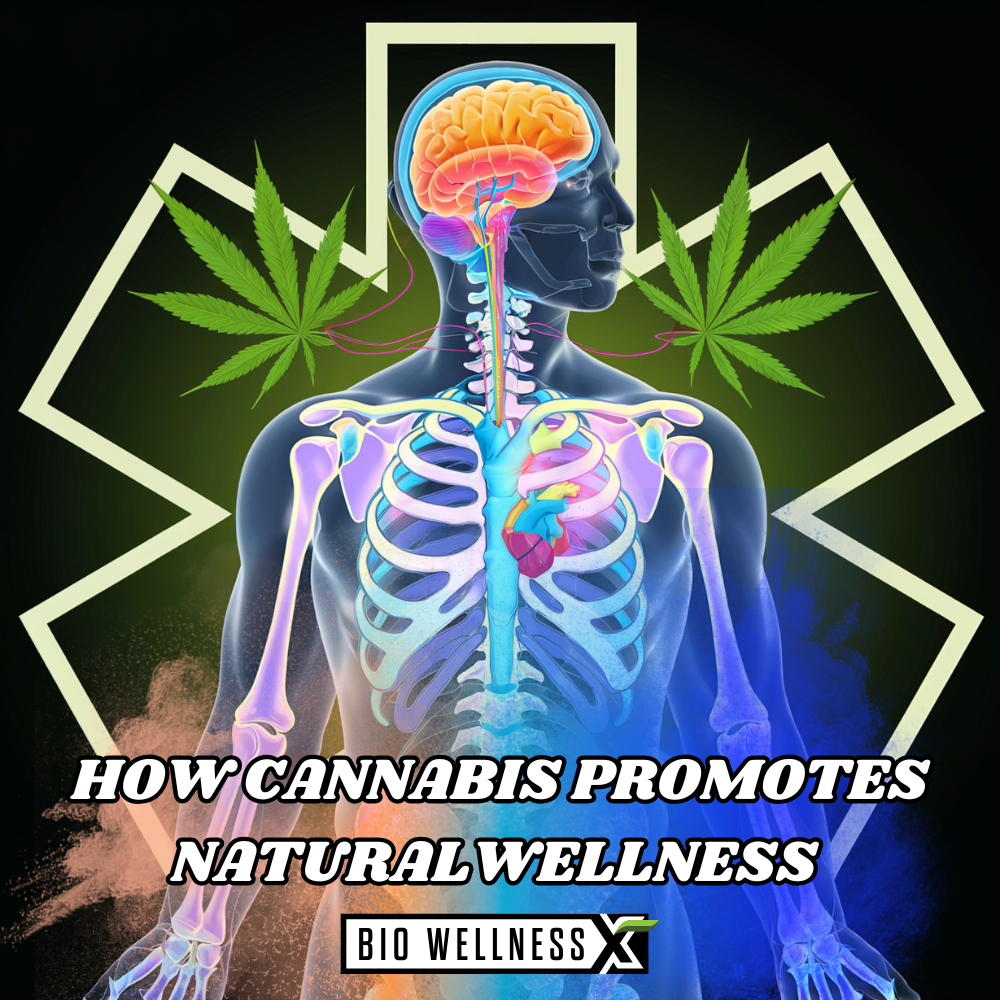
Encourages CB1 internalization and downregulation upon chronic administration: Picture CB1 receptors as “locks” and THC “keys” fit into them with continuous usage, your brain begins unlocking a few locks from the surface It creates fewer new locks as time progresses This is why normal users can require more cannabis to experience the same effects (tolerance).
Modifies CREB phosphorylation and immediate early gene transcription: CREB acts like a switch to turn brain cell genes on or off. THC flips this switch differently than normal, altering what proteins your brain cells produce. These changes can affect how your brain works long-term.
THC alters the way brain cells talk to each other by modifying the chemical messages they transmit, and with repeated use, your brain actually rewires itself in response. This accounts for both the short-term effects (such as feeling high) and long-term alterations (such as tolerance) that cannabis can produce.
CBD: The Multifaceted Modulator
Cannabidiol (CBD) interacts with the ECS and other systems through diverse mechanisms:
Primary Actions:
- Blocks FAAH, the enzyme that breaks down anandamide, leading to higher natural anandamide levels.
- Binds weakly to CB1 and CB2 receptors, modulating their activity rather than directly activating them.
- Interacts with serotonin (5-HT1A) and vanilloid (TRPV1) receptors, contributing to its anti-anxiety and physically-relieving effects.
- May counteract some of THC’s negative effects, such as anxiety and memory impairment.
Clinical Implications:
For Epilepsy:
Studies report that CBD may help calm down overactive brain cells that cause seizures. It works like a “volume knob” that turns down excessive electrical activity in the brain through several different pathways, not just one.
For Anxiety:
CBD is reported to do two helpful things:
- It may boost serotonin (the brain’s “feel-good” chemical), similar to how some anti-anxiety medications work
- It may increase your body’s natural “bliss molecule” (anandamide) production by preventing its breakdown
For Psychosis:
While THC sometimes causes scary, paranoid thoughts (especially in high doses), CBD can act like a balancing force that helps prevent or reduce these unwanted mental effects.
For Inflammation:
CBD talks to your immune system in several ways to help:
- Turn down swelling responses
- Reduce signals that cause physical discomfort
- Calm overactive immune responses that can damage tissues
Think of CBD as a multi-tool that can help with different health issues by working on multiple parts of your body’s systems at once rather than just targeting one specific thing like most medications do. This is why researchers are so interested in its potential, but also why more studies are needed to understand all its effects fully.
Final Thoughts: Cannabis and the ECS
The endocannabinoid system is among the most intricate regulatory systems in human physiology, with significant repercussions on almost all bodily functions. Cannabis molecules modulate this system in different ways, yielding both therapeutic benefits and potential risks.
Present-day scientific knowledge warrants cautious medical application for specific diseases, but with recognition of the need for:
- Stricter clinical testing.
- Better quality control for cannabis products
- Improved patient and provider education.
- Ongoing fundamental research into ECS function.
In our increasing understanding of this remarkable system, we are moving closer to realizing the full therapeutic potential of cannabinoid-based therapeutics and decreasing risks to patients and society.

Legal Disclaimer:
By reading this information presented, you agree to release the author of any liability that comes from using this data. This post contains no legal advice. Claims about cannabinoids have not yet been approved by the FDA. Read the full legal disclaimer here.
More Articles About Cannabis:
- What Is THCA Cannabinoid? A Beginners Guide!
- Understanding THCA Drug Tests and How to Avoid Failing
- THCA VS Delta-8 THC! What Are The Differences?
- Where to Buy Wholesale High THCa Flower
- How to Find the Best THCa Flower Online
- Bulk THCa: Buying THCa Flower By The Pound
References:
- Crocq, M.-A. (2020). History of Cannabis and the Endocannabinoid System. Dialogues in Clinical Neuroscience.
- Haney, M. (2022). Cannabis Use and the Endocannabinoid System: A Clinical Perspective. American Journal of Psychiatry.
- National Academies of Sciences, Engineering, and Medicine. (2017). The Health Effects of Cannabis and Cannabinoids.
- The Endocannabinoid System and Medical Marijuana in 15 Minutes! (2020). TheAnswerPage.com.
- Alger, B. E. (2013). Getting high on the endocannabinoid system. Cerebrum: the Dana Forum on Brain Science, 2013, 14.
- Di Marzo, V., & Piscitelli, F. (2015). The endocannabinoid system and its modulation by phytocannabinoids. Neurotherapeutics, 12(4), 692-698.
- Lu, H. C., & Mackie, K. (2016). An introduction to the endogenous cannabinoid system. Biological psychiatry, 79(7), 516-525.
- Pertwee, R. G. (2008). The diverse CB1 and CB2 receptor pharmacology of three plant cannabinoids: Delta-9-tetrahydrocannabinol, cannabidiol and Delta-9-tetrahydrocannabivarin. British journal of pharmacology, 153(2), 199-215.
- Russo, E. B. (2011). Taming THC: potential cannabis synergy and phytocannabinoid-terpenoid entourage effects. British journal of pharmacology, 163(7), 1344-1364.
- National Academies of Sciences, Engineering, and Medicine. (2017). The health effects of cannabis and cannabinoids: The current state of evidence and recommendations for research. National Academies Press.
- Hurd, Y. L., Spriggs, S., Alishayev, J., Winkel, G., Gurgov, K., Kudrich, C., … & Salsitz, E. (2019). Cannabidiol for the reduction of cue-induced craving and anxiety in drug-abstinent individuals with heroin use disorder: a double-blind randomized placebo-controlled trial. American Journal of Psychiatry, 176(11), 911-922.
- Devinsky, O., Cross, J. H., Laux, L., Marsh, E., Miller, I., Nabbout, R., … & Wright, S. (2017). Trial of cannabidiol for drug-resistant seizures in the Dravet syndrome. New England Journal of Medicine, 376(21), 2011-2020.
- Volkow, N. D., Baler, R. D., Compton, W. M., & Weiss, S. R. (2014). Adverse health effects of marijuana use. New England Journal of Medicine, 370(23), 2219-2227.
- Freeman, T. P., Craft, S., Wilson, J., Stylianou, S., ElSohly, M., Di Forti, M., & Lynskey, M. T. (2021). Changes in delta-9-tetrahydrocannabinol (THC) and cannabidiol (CBD) concentrations in cannabis over time: systematic review and meta-analysis. Addiction, 116(5), 1000-1010.

